Setting A Goal
Transcript
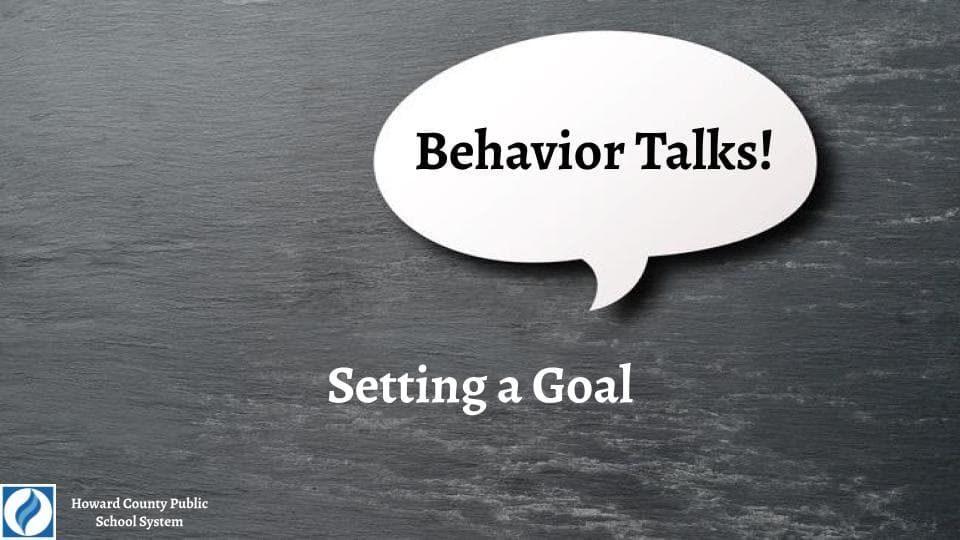
Behavior Talks: Setting a Goal
Welcome to Behavior Talks. This Behavior Talks Module is about Setting a Goal.
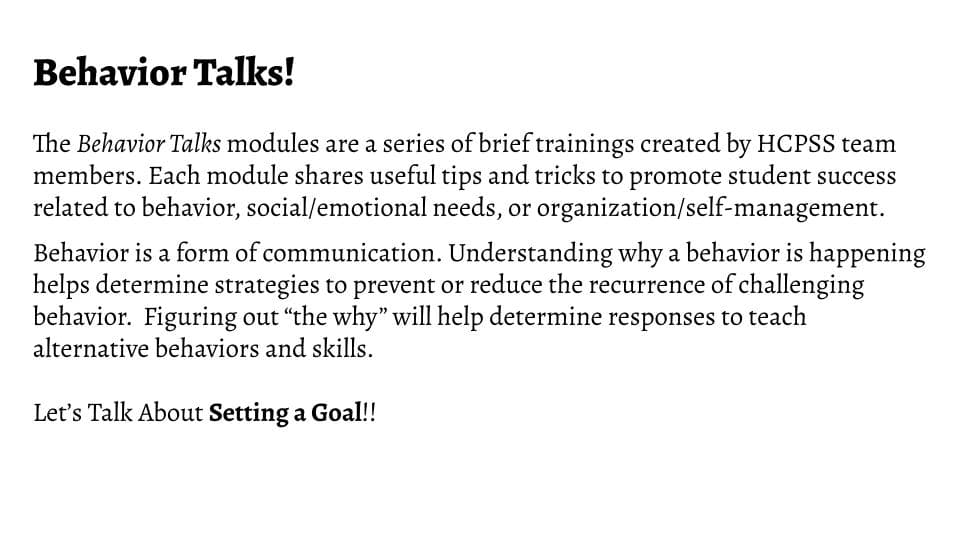
About Behavior Talks
The Behavior Talks modules are a series of brief trainings created by HCPSS team members. Each module shares useful tips and tricks to promote student success related to behavior, social/emotional needs, or organization/self-management.
Behavior is a form of communication. Understanding why a behavior is happening helps determine strategies to prevent or reduce the recurrence of challenging behavior. Figuring out “the why” will help determine responses to teach alternative behaviors and skills.
Let’s talk about setting a goal.
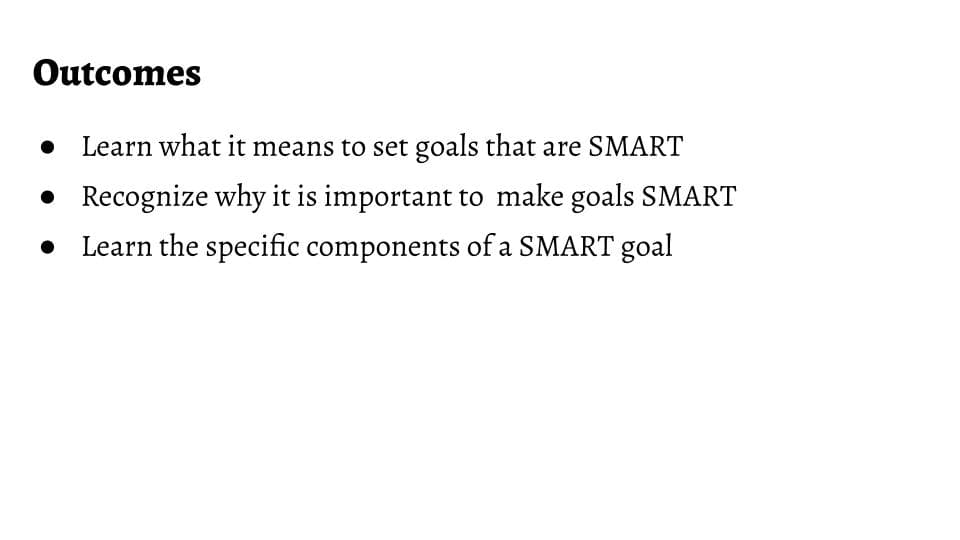
Outcomes
By the end of this module, you will learn what it means to set a SMART goal, why goals that are SMART are important, and how breaking down the specific components of a goal can improve overall behavioral and academic outcomes.

Now Let's Talk About Setting A Goal
Let’s talk about setting a goal!
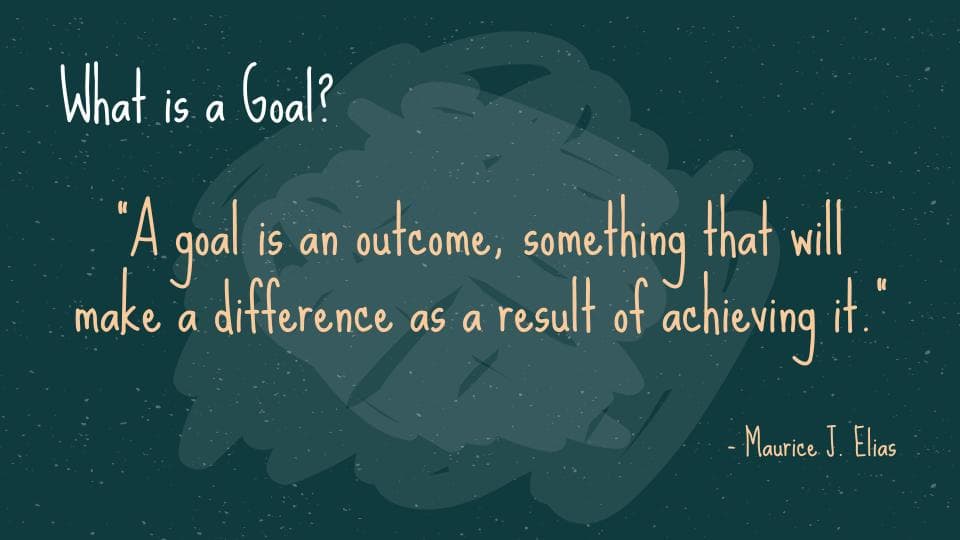
What is a Goal?
According to Maurice J. Elias, a Professor of Psychology at Rutgers University, a goal is an outcome, something that will make a difference as a result of achieving it. Learning how to set and break down goals with your student will help improve their overall focus and success!
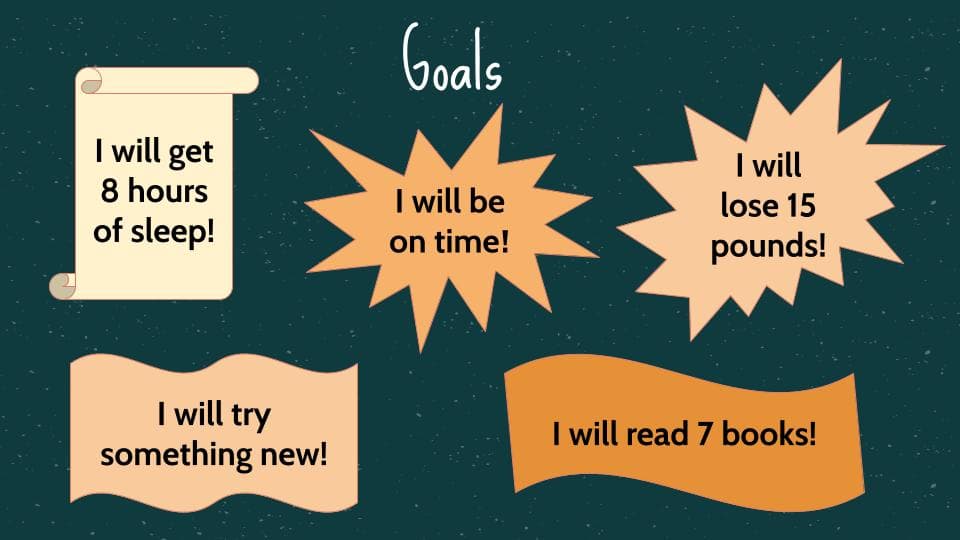
Goals
We all set goals for ourselves to help with self-improvement. Goals such as getting 8 hours of sleep or losing weight may be health related while others such as reading a certain number of books, trying something new, or being on-time for activities may increase our feelings of self-worth. There are many types of goals that people choose to set for themselves, but no matter what type of goal you set, it’s important that your goal is SMART.
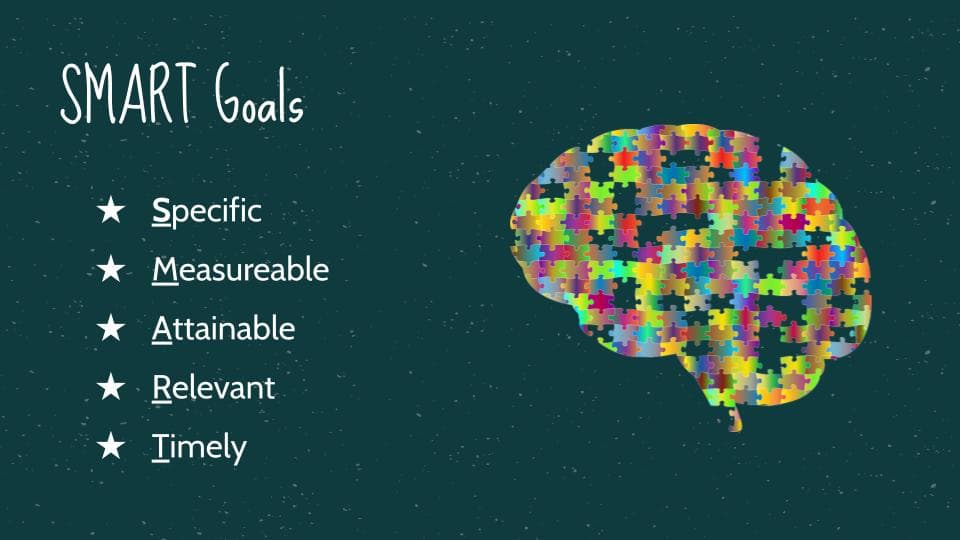
SMART Goals
SMART stands for Specific, Measureable, Attainable, Relevant, and Timely. It takes practice to set SMART goals, but it is a skill that can be developed. We support the success of students by setting goals that are SMART. Goals that include SMART components provide a clear indicator of achievement, encourage self-monitoring, and create a starting point for future goals.

Do Better in School
Your student tells you that they want to “do better in school”. While you may be ecstatic to hear this and think it’s a great idea, does it meet the criteria for being a SMART goal? Right now in its current form it doesn’t. Developing goals that are SMART takes practice. How can you support your student to set a SMART goal? Let’s start with making the goal more specific.
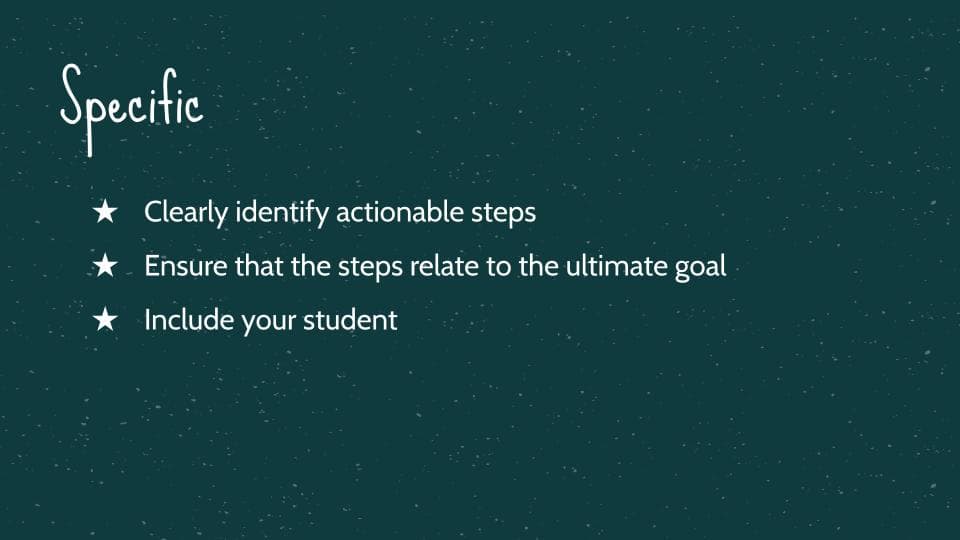
Specific
To make “Do better in school” specific, identify actionable steps that may achieve this goal. Specific examples could include, submitting Science assignments on time for the week, waking up at 6:30 AM each school morning, or studying for an hour each night. These examples are specific because they define what your student must do. Be sure to include your student when brainstorming the actionable steps.
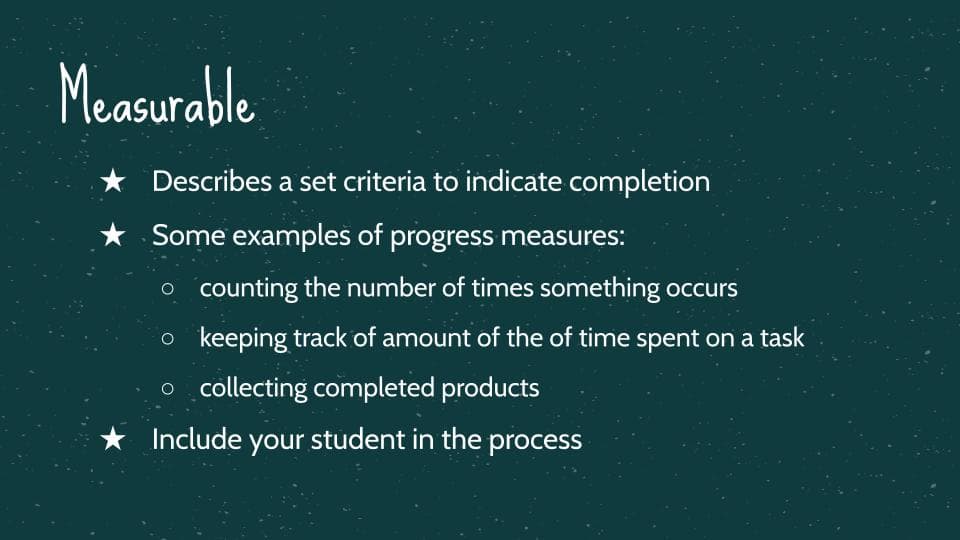
Measurable
Once the “do better in school” goal is broken into specific steps, how can it be made measurable? The actionable steps become smarter by adding a way to show progress toward achieving the goal. To make it measurable you need data. Data can come in many forms. The type of data you collect should make sense for the type of goal that is chosen. If the goal includes completing a certain number of assignments, this is an example of frequency data or completed products. You can count how many assignments are completed in a time period. If the goal relates to a length of time, this is an example of duration data. An example of tracking duration could include you using a timer or stopwatch to track how long your student engaged in the activity. These data points are trackable pieces of information that show whether or not a goal has been met. Include your student in the decision-making process about how the goal will be measured.
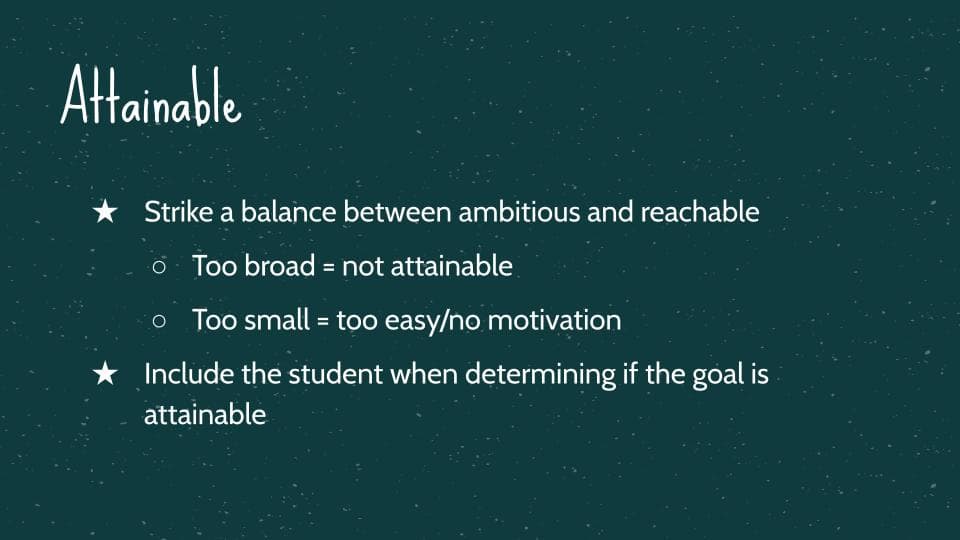
Attainable
Attainable means considering whether it is possible to achieve the goal. However, striking the right balance between setting goals that are ambitious, but also reachable is important. If the goal is too lofty, your student may be discouraged if they are unable to achieve the goal. If the goal is too easy then your student won’t be challenged enough. Ultimately, you want to help your student set goals that are reachable and require effort. In other words, the goal shouldn’t be too easy or too hard. Now let’s consider if “do better in school” is attainable. As it’s written, this goal is too broad and there’s no way to measure it. Be sure to include your student when determining if the goal is reachable. For example, if “do better in school” is changed to “submitting 100% of Math assignments on time for one month” you and your student can consider if this a reasonable goal to attain. In this example, starting with 100% may be too lofty, so consider starting at a lower percentage. Your student can gradually work their way towards submitting 100% of assignments.
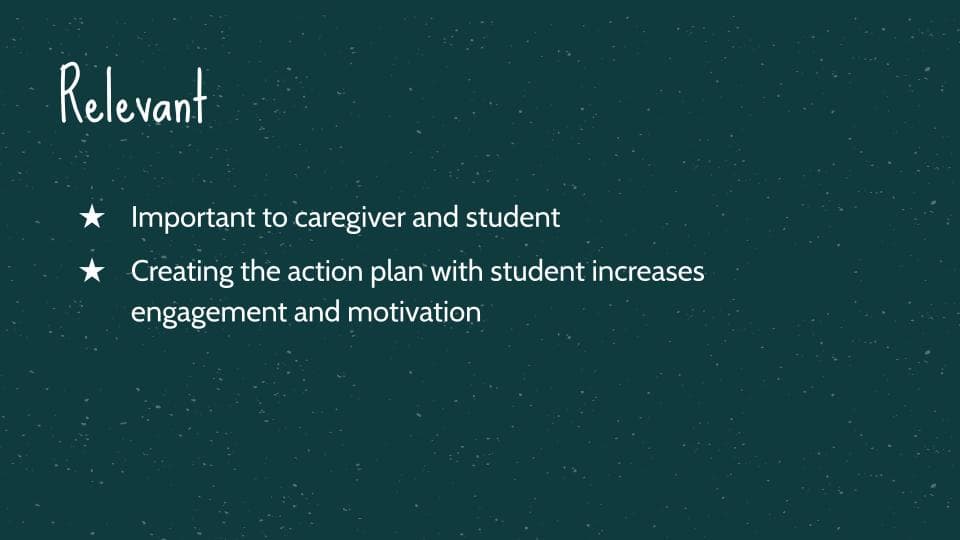
Relevant
Is “do better in school” relevant? If the goal of “doing better in school” is not relevant or motivating to your student, then the goal is most likely not going to be achieved. Relevancy relates to meaningful change for the person working to complete the goal. By engaging your student in the SMART process you are having them identify what is meaningful and motivating to them. Their participation will create a path for success towards achieving the goal. As your student progresses through the measurable and actionable steps, they can receive feedback from you or others on how they are doing. This engagement and feedback will help motivate your student to stick with the goal. Ultimately, by engaging your student in the goal setting process you are making it relevant because the goal is not only important to you, but also to your student.
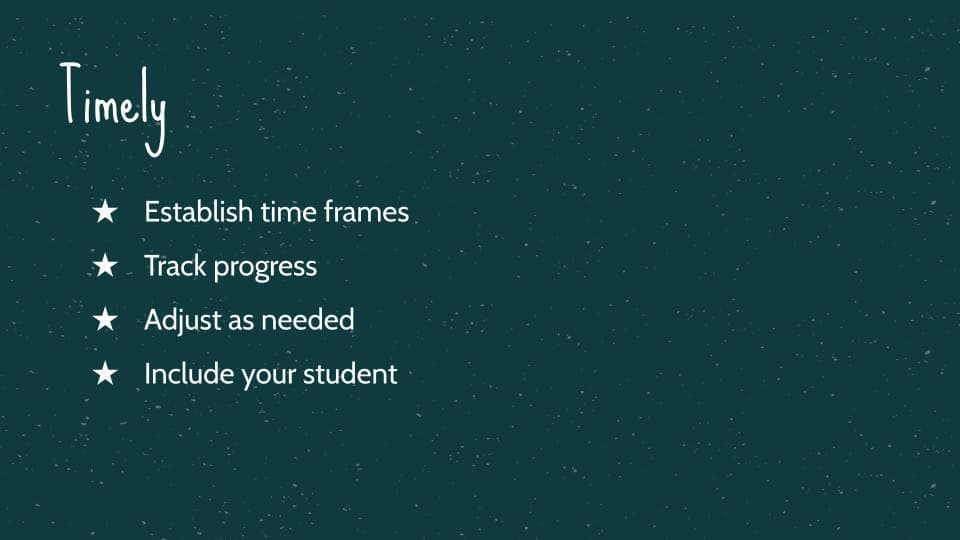
Timely
The final component in making “do better in school” a SMART goal is to make sure that it is timely! This means the goal should include a beginning and an end. “Someday” and “One day” aren’t specific enough when you are thinking about how you will track your progress. With your goals, you want to establish timeframes that work with your measurable action steps. This means using timing like, “in two weeks”, or “by the end of the first quarter. It is ok if you need to adjust your goal and change the time frame you first set up. Don’t give up because the time you first set doesn’t seem to be manageable. Include your student in the discussion to establish a reasonable time frame to evaluate your goal. The important part here is that your student is able to meet the goal.
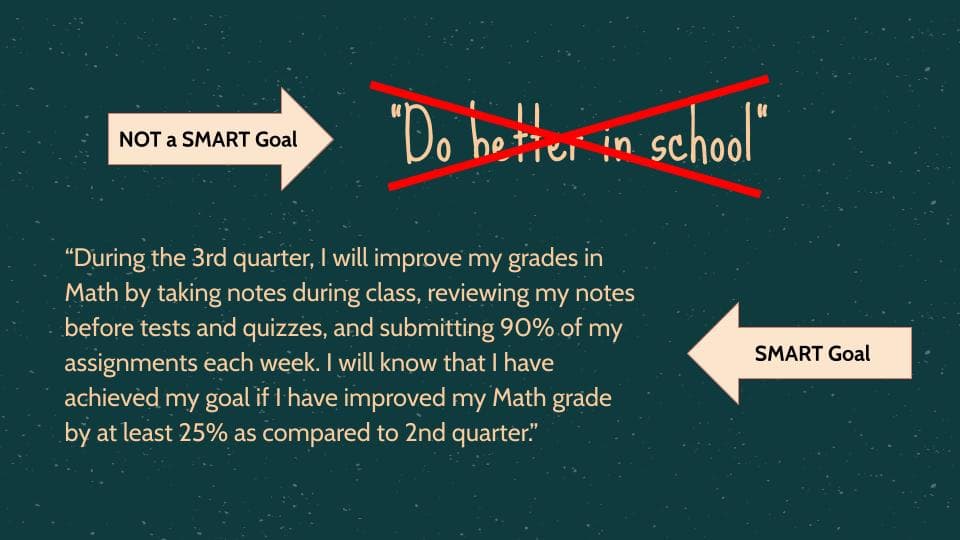
Make a SMART Goal
Let’s make “do better in school” a SMART goal. One example of how to make “do better in school” a SMART goal is: “During the 3rd quarter, I will improve my grades in Math by taking notes during class, reviewing my notes before tests and quizzes, and submitting 90% of my assignments each week. I will know that I have achieved my goal if I have improved my Math grade by at least 25% as compared to 2nd quarter.” The SMART goal is Specific because it provides actionable steps to achieve the goal. It is Measurable because you can see the student turn in completed assignments and receive a final grade. Attainable and Relevant are achieved through the engagement with your student in creating the goal. The clear start and end time are what make it Timely. Remember, include your student as you set SMART goals!
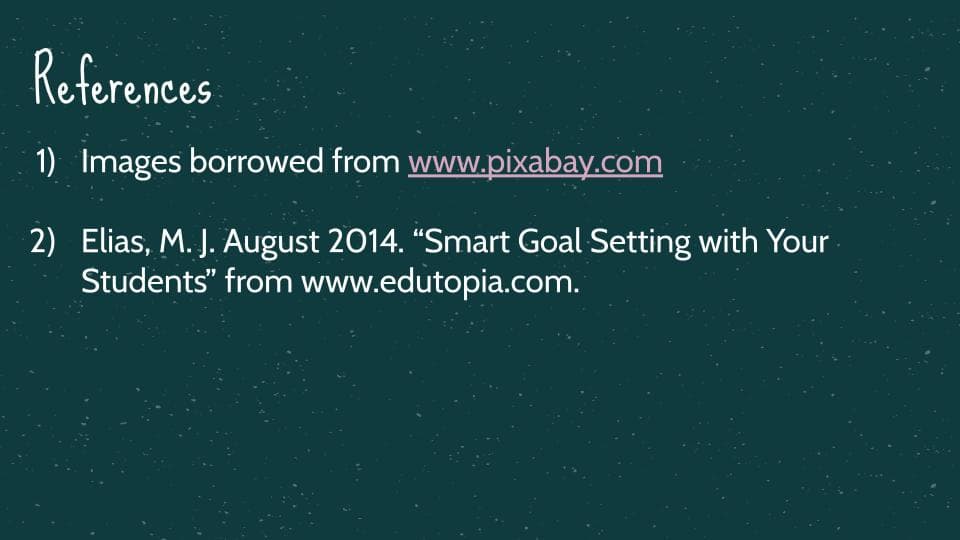
References
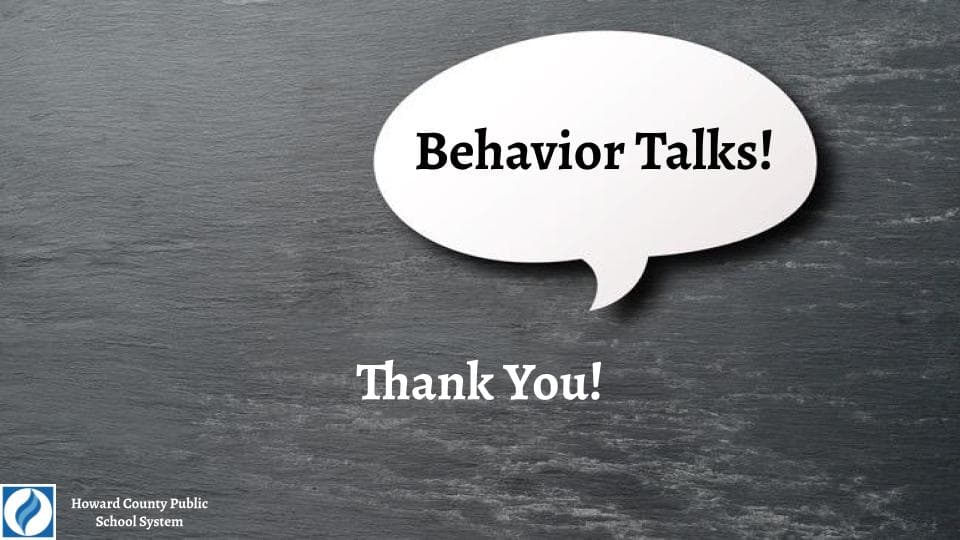
Thank You
Thank you for watching! We hope that you found this video helpful. For additional resources please visit the Behavior Talks Additional Resources page.